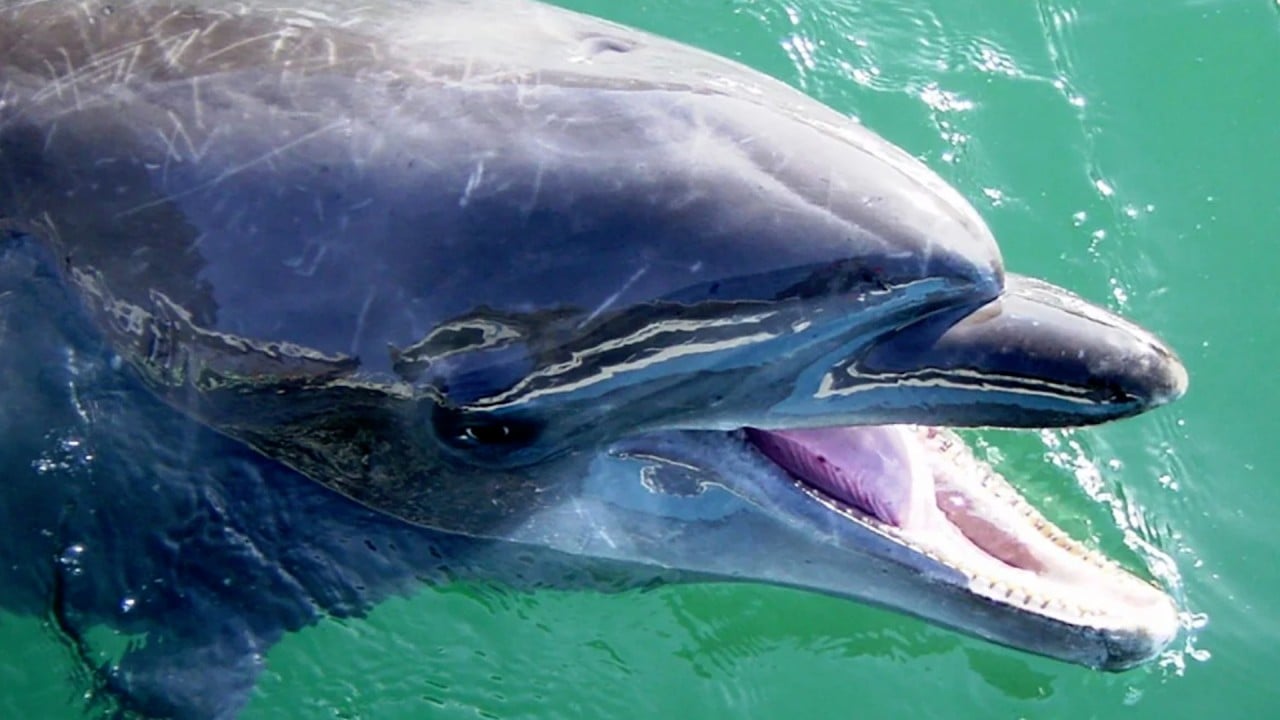
02:23
‘Lonely’ dolphin blamed for attacking beach goers in Japan
‘Lonely’ dolphin blamed for leaving bathers bloodied in Japan
Eighteen people have been injured by what is believed to be a single dolphin, which experts said might be acting out due to loneliness
Eighteen people have so far been injured in apparently unprovoked attacks by the Indo-Pacific bottlenose dolphin off beaches in the town of Tsuruga.
One of the most shocking attacks was caught in a video clip broadcast by the Fuji News Network channel. Filmed on the morning of August 20 at Mizushima beach, the dolphin’s dorsal fin can be seen cutting through the water towards a child in a yellow life jacket who is trying to get out of the way.
The life jacket makes a series of jerky movements as onlookers on the beach shout and a man in the water starts to go to the child’s rescue. Other swimmers leave the water or take refuge on a floating pontoon.
The man who went to help the child sustained minor injuries, FNN reported, but the boy’s hands were bleeding profusely by the time he reached the beach. The child required 30 stitches and his injuries are expected to take a month to fully heal.
Local coastguard officials immediately ordered bathers to leave the water and the beach was closed for the rest of the day.
One day previously, a woman was bitten on her right hand and sustained minor injuries, while a man sustained minor injuries to his left foot and right thumb as he swam off nearby Shiraki beach.
“It appears that the multiple incidents have been committed by the same individual dolphin,” said Mari Kobayashi, head of the marine biology laboratory at the Hokkaido-Okhotsk campus of Tokyo University of Agriculture.
“It is believed to be a male Indo-Pacific bottlenose and we know that males sometimes communicate by biting each other, so it may be that it is trying to do this with humans,” she told This Week in Asia. “Also, this is a species that usually lives in groups, so it is possible it is lonely.”
Incidents involving dolphins off Fukui were first reported in 2022, when one swimmer was injured, but rising to five cases last summer. There have also been suggestions that the dolphin was attempting to press its genitals against the bathers.
Experts advise those who are confronted by an aggressive dolphin to immediately move away from the area and leave the water. They also caution that interactions with what may initially appear to be a friendly dolphin can quickly become dangerous, as in the case of a dolphin that killed a bather off the Brazilian resort of Sao Sebastiao in 1994 after apparently becoming stressed.
“It would be worth looking into whether these attacks could have been defensive against a perceived threat because I know of no evidence to suggest that dolphins are interested in eating humans,” said Kevin Short, a naturalist and former professor of cultural anthropology at Tokyo University of Information Sciences.

